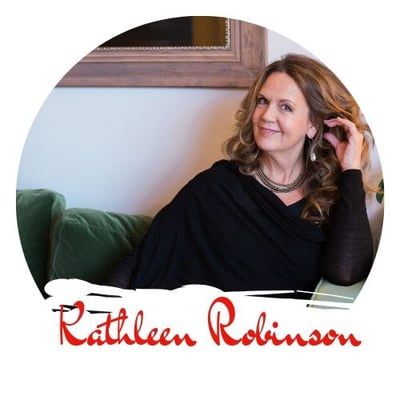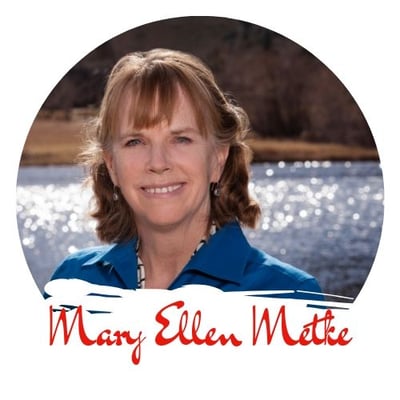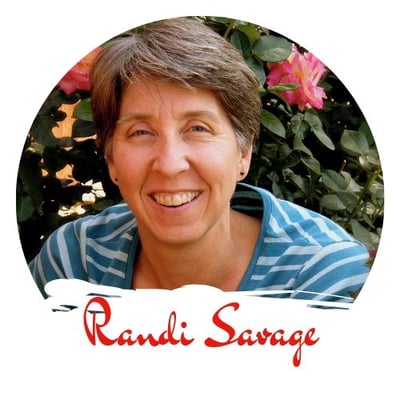Randi Savage, Mary Ellen Metke and Kathleen Robinson are each accomplished professors, students and practitioners of the Worsley school of Five Element Acupuncture. They will be on campus together on October 26th and 27th to share the knowledge they've collected over the last decades of practice and study.

Kathleen studied directly under Dr. JR Worsley at his school in Leamington Spa, England from 1988-1990. Kathleen has written curriculum, taught Worsley Five Element Acupuncture, and served as faculty member and clinical supervisor at ITEA since 1992. She brings 30 years of experience to her acupuncture practice and students. With a focus on treating and teaching the underlying cause of illness, per the tenants of pure Five Element Acupuncture, both patients and students develop an awareness and embody an understanding of this powerful medicine's impact on the body, mind and spirit. Five Element Acupuncture saved her life. She believes it can do the same for others. As such, she both teaches and treats from that perspective.

Mary Ellen began her studies in Chinese medicine with Ben Lo in 1980. She began teaching Tai chi and Qi Gong in 1985, then went on to study Five Element Acupuncture at the Traditional Acupuncture Institute (TAI) in Columbia, Maryland. Mary Ellen did an intensive training in England with Dr. JR Worlsey, participated in Teacher Training, and the Master Apprentice Program. She attended/hosted patient consults for 20 years with JR and Judy Worsley as well as Hilary Skellon. Mary Ellen has been a teacher and clinical supervisor at ITEA since 2000. She has built and maintained a thriving Five Element Acupuncture practice in Boulder, CO since 1989 and continues to teach Tai chi and Qigong. She is currently working on her Doctorate in Acupuncture through the Pacific College of Oriental Medicine.

Randi has been studying, practicing, and teaching Tai chi and Qi Gong since 1997. She earned her Licentiate and Master’s in Acupuncture in 2006 at the Institute of Taoist Education and Acupuncture (ITEA), followed by her Doctorate of Acupuncture from Pacific College of Oriental Medicine and in 2018. She has been teaching and doing clinical supervision at ITEA since 2013 and served as Vice President of the Worsley Institute for 5 years. Randi blends her Western medicine knowledge (Master’s in Nursing) into her Five Element practice and teachings.
How did you meet? What made you want to start teaching CFEA as a group as opposed to individually? What does each of you bring to the table?
Randi: We all met at the Institute of Taoist Education and acupuncture (ITEA) in Louisville, Colorado and over the years we have become good friends and colleagues. I feel we have an amazing synergy when we work together. We each come from different backgrounds and have our own unique talents. Then put us in a room together and things start happening. Ideas, thoughts, observations, and things start to happen and we can make a class exciting, challenging and invigorating so people can walk away with new things they can use in the treatment room and beyond.
Kathleen: I did my first Teacher Training with Dr. JR Worsley in 1992. I began teaching four years later. It has been a singular joy doing so. About five years ago, Randi and I began leading a monthly clinical students meeting and we found the energy of two multiplied the experience tenfold. We began hatching the idea of teaching together. While we each bring our perspective to the table, we realized something was missing. Mary Ellen’s gift of bringing in the physical aspect of training was the next intelligent choice for us.
Speaking of, what are your backgrounds, and do you find that you use things from your “pre-acupuncture” lives in practices today?
Mary Ellen: My acupuncture practice has been heavily influenced by my background in art as well as by studying T’ai Chi Ch’uan with Ben Lo. I still am a painter and photographer. T’ai Chi taught me many things about energy, listening, sensing and where people have tension in their bodies. Acupuncturists are constantly developing listening, looking and feeling skills, and creating art and practicing T’ai Chi contribute to those skills. As acupuncturists we are fine-tuning our skills so we can pick up subtleties with our clients to help us hone our diagnostic skills to assist our patients. The artist’s mind takes note of different subtleties of color, light, wind, weather, sounds and so on. Keeping that artist mindset trains one’s mind to continually look not only at other people but also at nature. Being more in tune with nature helps one be a better acupuncturist; as a teacher, I encourage my students to also embrace nature’s glorious lessons.
Randi: My first profession was as a nurse and my second was as a massage therapist. I specialized in Psychiatric nursing. I worked in-patient psych for many years. I became disheartened by the overuse of psychotropics and psychotherapy. I knew there had to be a better way to help people feel better within themselves despite having a diagnosis of mental illness. I found Five Element Acupuncture when I attended a month-long Qi Gong training at the Omega Institute. While at the retreat, someone gave me a copy of JR Worsley’s book on the Elements and the Officials. I knew in that moment that I wanted to become a Five Element Acupuncturist so I could use the Spirit of the Acupuncture Points to help anyone suffering on any level: especially on an emotional/mental/spirit level. My previous life as a nurse and massage therapist has helped me as an acupuncturist to really be able to assess the whole person on all levels from both Western and Eastern perspectives.
Kathleen: I came to Five Element Acupuncture early in life for the times. I graduated with a B.A. in Religion and became a waitress because what else does one generally do with a liberal arts degree. I knew I had to find something significant to do professionally, and so I left the service industry and made my way to a small town in Maine. By luck, I found a 5 Element practitioner there. I was 25 when I began treatment and by the third treatment knew I had found my calling. TAI in Columbia, Maryland was the only 5 Element school in the US at the time. Within months of deciding to study acupuncture, Dr. JR Worsley opened his British school to Americans and I began WICA. Fortunately, all of my training was directly under JR Worsley, Judy Worsley, and JR’s daughter, Hilary Skellon. It was a remarkable education to say the least.
While being a 5 Element practitioner has been my first profession, my childhood and the years working in the food industry taught me so much about trauma and the basic needs of people. I was and remain intrigued by the interplay of the two and how something as simple as the practice of acupuncture can bring peace and resolution to the troubles which reside, for most people, just below the surface of things.
How is Classical Five-Element Acupuncture different than other styles of acupuncture?
Randi: In Five Element acupuncture there are several differences: using direct moxa, needle technique, some of the points are located differently, treatment planning is very different-we use the acupuncture points for the Spirit of point-what/how it can help a person on the “spirit” level.
Kathleen: One of my first experiences of Five-Elements was the notion of the “spirit of a point”. The poetry and depth of the translation of a Chinese character, applied in the material of a patient through needle insertion and moxibustion was a startling discovery to me. To witness the changes within a patient based on this application is thrilling. To me, this is the most significant difference.
Mary Ellen: In a lot of ways I see similarities as we all want the patients to improve, feel better and experience less pain. We also make note of what we see, hear, and what we experience when we take their pulses. Five-Element requires building a deep rapport with the patients and focused observation of subtleties: the color of the face, the odor, the highly-tuned reading of pulses to assess energy before, during and after treatment, taking note of blocks to be cleared. Treatments are very individualized, based on treating the whole person on the body, mind, and spirit level. We draw upon the classical wisdom of “the spirit of the acupuncture points” to help the patients realize their full potential.
Do you have any advice for current students who will be going out into the world with fresh new acupuncture licenses soon?
Randi: Come from your heart, be present, and get out of your own way!
Kathleen: Believe! Believe! Believe! This medicine does not come from the mind. Embodying the medicine, believing it to be valid and true, and speaking and practicing it from that place is all you need to be the best practitioner possible. This belief enables you to build a practice not based on ideas, but on authenticity of the spirit. And that is one powerful magnet!
Mary Ellen: Stay curious. Never stop learning, listening, feeling, asking and being present. If you become complacent then your skills will diminish and it will affect your practice. Also listen to your gut instinct. It is often very accurate, both in the treatment room and in life. Lastly don’t get too caught on your agenda and how things “should be” a certain way. You never know what is around the corner.
Thank you so much for your time! We really look forward to meeting you in October. For any readers outside of Austin, if you are interested in their CEU course, it will be available on livestream as well.

